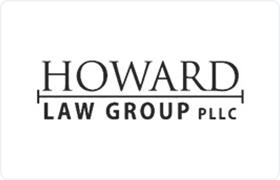Old Brownsbro Reorganization Lawyer, Kentucky
Sponsored Law Firm
-
 x
x

Click For More Info:
-
Howard Law Group, P.L.L.C.
213 Saint Clair St Ste 101 Frankfort, KY 40601» view mapBankruptcy & Debt Where Dedication Meets Experience
At Howard Law Group, PLLC, our Frankfort lawyer has devoted his entire practice to helping clients understand their rights and helping clients make empowered legal decisions.
800-716-8131
Paul J. Krazeise
Bankruptcy, Reorganization, Tax
Status: In Good Standing *Status is reviewed annually. For latest information visit here Licensed: 41 Years
Michael Gene Adams
Tax, Litigation, Corporate, Reorganization
Status: In Good Standing *Status is reviewed annually. For latest information visit here
Katie Marie Glass
Litigation, Family Law, Reorganization, Bankruptcy
Status: In Good Standing *Status is reviewed annually. For latest information visit here Licensed: 10 Years
 Douglas Howard Frankfort, KY
Douglas Howard Frankfort, KY Practice AreasExpertise
Practice AreasExpertise